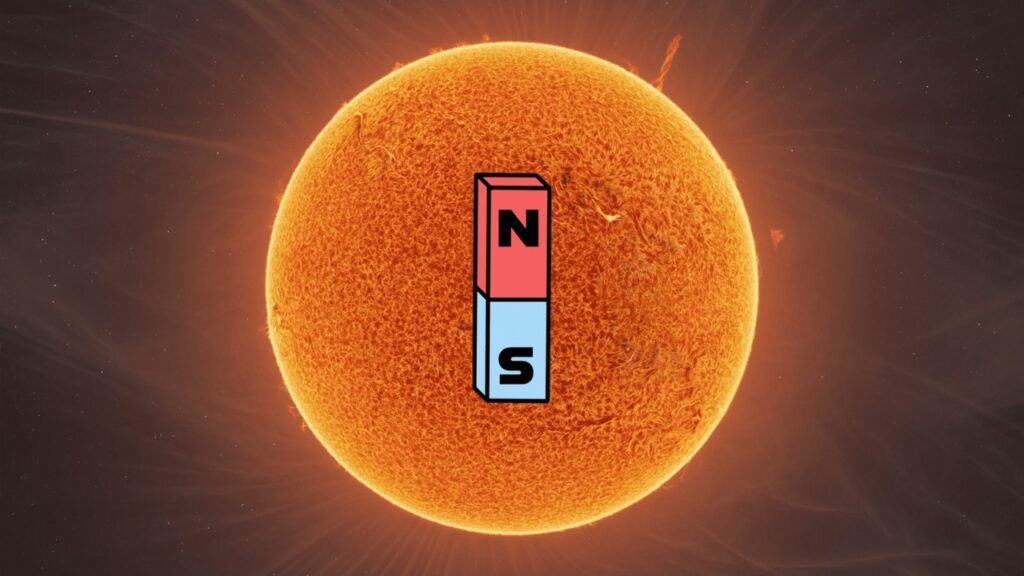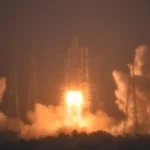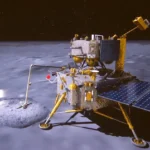The sun is approaching a significant milestone: a magnetic field reversal. This event, occurring approximately every 11 years, signals a pivotal phase in the solar cycle, influencing solar activity from peak to trough.

Understanding the Solar Cycle and Magnetic Reversal
The solar cycle, spanning about 11 years, hinges on the sun’s magnetic field and is discernible through sunspots’ frequency and intensity on its surface. At its zenith, known as solar maximum, solar activity peaks, heralding subsequent transition towards solar minimum. This transition involves the sun’s magnetic field shifting from a complex, multipolar state back to a simpler dipole configuration.
The Hale Cycle and Magnetic Complexity
Embedded within the solar cycle is the Hale cycle, a 22-year magnetic oscillation during which the sun’s magnetic field undergoes a complete reversal. This reversal involves the magnetic poles switching places, mirroring Earth’s magnetic orientation.
Mechanisms Driving Polarity Reversal
Sunspots, regions of intense magnetic activity on the sun’s surface, play a crucial role in triggering magnetic reversals. As sunspots emerge at different latitudes, they align with either the existing or incoming magnetic field orientation, adhering to Hale’s law. Over time, these active regions migrate towards the poles, contributing to the eventual reversal.
Gradual Transition and Solar Effects
Contrary to popular belief, the solar magnetic field reversal is not instantaneous but unfolds gradually over approximately a year or two. This gradual shift mitigates immediate drastic impacts on Earth, dispelling notions of sudden catastrophic consequences.
Impacts on Earth and Beyond
While the magnetic reversal itself doesn’t directly cause severe space weather events like solar flares or coronal mass ejections (CMEs), its occurrence coincides with heightened solar activity during solar maximum. This period, characterized by a complex magnetic field, amplifies space weather’s intensity, affecting technologies reliant on satellite communication and navigation.
Shielding Earth from Cosmic Rays
One beneficial outcome of the magnetic shift is its effect on galactic cosmic rays. As the sun’s magnetic field reconfigures, it forms a wavy current sheet that helps deflect these high-energy particles away from Earth, safeguarding both spacecraft and astronauts in orbit.
Predicting Future Solar Activity
Scientists monitor the magnetic field reversal closely to gauge the upcoming solar cycle’s strength. A swift return to a dipole configuration suggests an active cycle, whereas a delayed reconfiguration indicates a potentially weaker cycle, akin to the subdued Solar Cycle 24.
Conclusion
In conclusion, while the sun’s impending magnetic field reversal marks a significant event in its natural cycle, it poses no immediate danger to life on Earth. Instead, it offers opportunities for scientific exploration and deeper understanding of our sun’s dynamic behavior and its profound impacts on our technological infrastructure and space environment.








